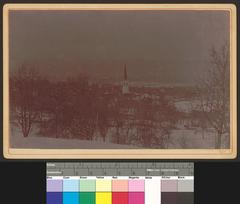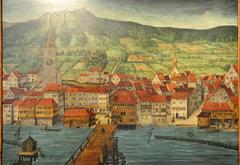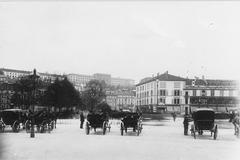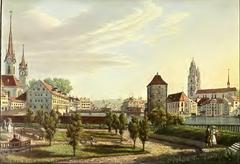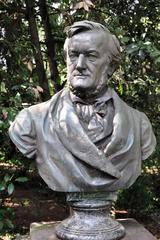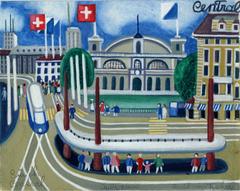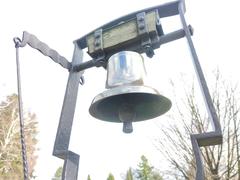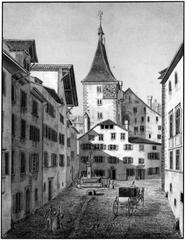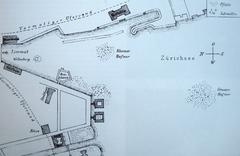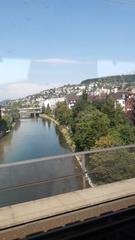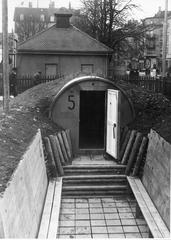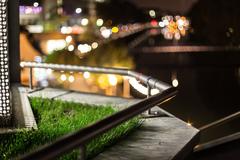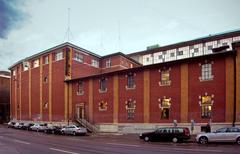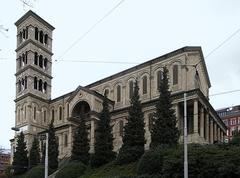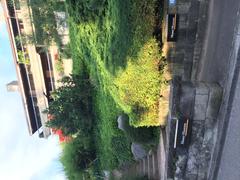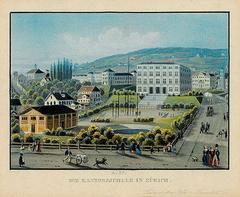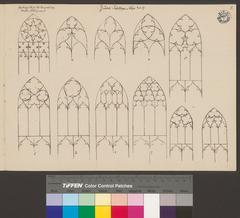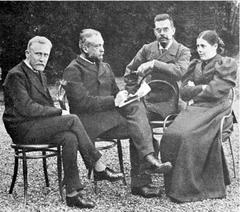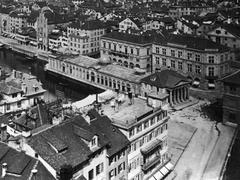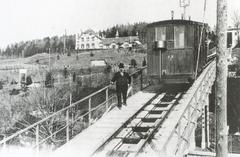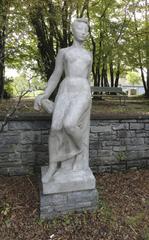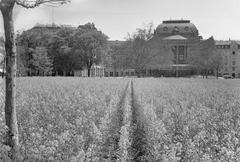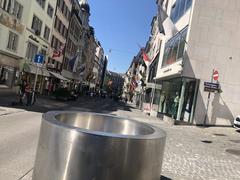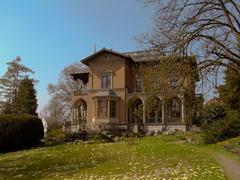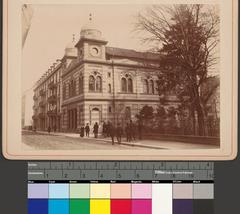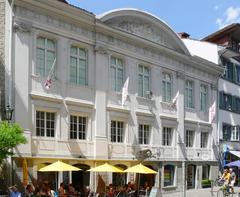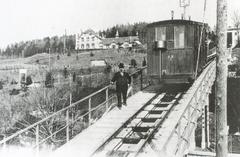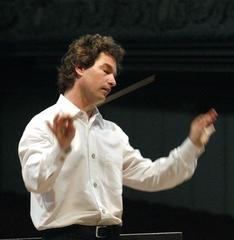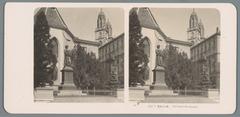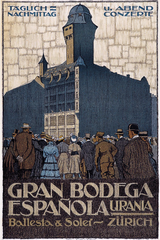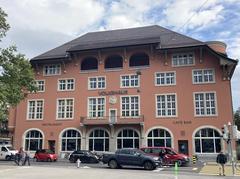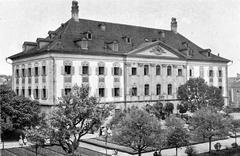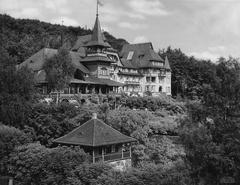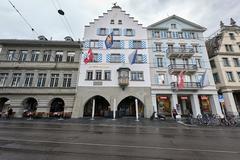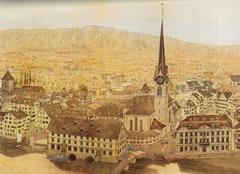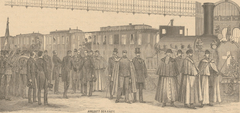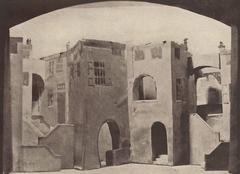Botanical Garden of the University of Zurich: Visiting Hours, Tickets, and Comprehensive Guide to Zurich’s Premier Green Oasis
Date: 04/07/2025
Introduction
Nestled in Zurich’s vibrant Weinegg quarter, the Botanical Garden of the University of Zurich is a living testament to the city’s long-standing dedication to science, conservation, and public engagement. Spanning approximately 53,000 square meters, this urban sanctuary is not only an architectural and botanical marvel but also a hub for education, research, and cultural enrichment. Originally established in the 19th century and relocated to its modern site in the 1970s, the garden now showcases around 7,000 plant species from alpine, Mediterranean, tropical, and savannah ecosystems, thoughtfully displayed in thematic biotopes and three iconic domed greenhouses.
This guide brings you detailed, up-to-date information on visiting hours, ticketing, accessibility, main attractions, and practical tips, as well as insights into the garden’s historical evolution, scientific significance, and its role in Zurich’s broader cultural landscape. Whether you’re a botany enthusiast, a student, a family, or a traveler seeking tranquility, the Botanical Garden promises an enriching, accessible, and memorable experience. For further resources, consult the official Botanical Garden website and its Wikipedia entry.
Table of Contents
- A Brief History: From “zur Katz” to Weinegg
- Architectural Highlights: The Iconic Greenhouses
- Scientific and Educational Value
- Visitor Information: Hours, Tickets, Directions, and Facilities
- Garden Layout and Main Attractions
- Seasonal Experiences and Events
- Accessibility, Amenities, and Family Features
- Nearby Attractions and Complementary Experiences
- Sustainability, Etiquette, and Language Support
- FAQs
- Cultural and Scientific Impact
- Summary and Final Tips
- References & Sources
1. A Brief History: From “zur Katz” to Weinegg
The origins of Zurich’s university botanical tradition date back to 1837, when the city’s first garden was established on the former “zur Katz” bastion, itself built over 18th-century fortifications (Old Botanical Garden, Zurich Wikipedia). The site, designed by Leopold Fröbel, featured a pioneering Palm House and was deeply linked to Zurich’s scientific heritage, including the work of Conrad and Johannes Gessner.
As Zurich expanded, the garden’s original location became constrained by urban development. In 1971, following a public vote, the garden was relocated to the Weinegg district, utilizing the spacious parklands of the Bodmer-Abegg estate. By 1977, under landscape architect Fred Eicher, the new garden opened, offering ample space, improved conditions, and the opportunity to combine public recreation with advanced plant science (Botanical Garden of the University of Zurich: History, Visiting Information, and Highlights).
2. Architectural Highlights: The Iconic Greenhouses
A defining feature of the modern garden is its trio of hemispherical greenhouses—Switzerland’s first of their kind—designed by Hans and Annemarie Hubacher. These domes, constructed from curved acrylic panels, each simulate a distinct climate:
- Tropical Greenhouse: Home to lush rainforests, palms, and orchids.
- Subtropical Greenhouse: Mediterranean, South African, and Australian flora, including citrus and proteas.
- Savannah Greenhouse: Drought-resistant species like acacias and baobabs.
The greenhouses also contain aquariums representing river ecosystems from Africa, South America, and Southeast Asia, supporting both plant and aquatic life (Wikipedia; The Aficionados).
3. Scientific and Educational Value
As part of the University of Zurich, the Botanical Garden is a vital center for research, conservation, and learning (UZH Department of Systematic and Evolutionary Botany). Its living collections are among the most diverse in Switzerland, supporting university courses, scientific projects, and biodiversity initiatives. The garden also features the renowned Zurich Herbaria, a collection of over 3.8 million plant specimens, contributing to global botanical research (UZH News).
Educational programs include guided tours, workshops for all ages, and citizen science projects that involve the public in monitoring local flora (Botanical Garden UZH).
4. Visitor Information: Hours, Tickets, Directions, and Facilities
Visiting Hours (2025)
- Outdoor Gardens: Daily, 9:00 AM – 6:00 PM (April–October); 9:00 AM – 4:00 PM (November–March)
- Greenhouses: Open same hours as gardens; last entry 30 minutes before closing; closed Mondays (Nov–Mar)
Admission & Tickets
- Outdoor Gardens: Free
- Greenhouses: CHF 5–6 adults, CHF 3 students/seniors, free for children under 16 (Tropter)
- Guided Tours & Workshops: Fees apply for special events; see official website
Directions
- Address: Zollikerstrasse 107, 8008 Zurich
- Public Transport: Tram lines 6, 9, 10; buses 33, 77 (stop: Botanischer Garten)
- Parking: Limited; public transport recommended
Facilities
- Wheelchair accessible paths and ramps
- Restrooms, picnic areas, benches, and café/canteen
- Free Wi-Fi in select areas
- Bilingual signage (German/English) and printed maps at entrance
5. Garden Layout and Main Attractions
Key Zones
- Three Greenhouses: Tropical, subtropical, and savannah environments
- Thematic Gardens: Mediterranean, wadi (desert), spring, alpinum, medicinal and utility plant beds
- Aquatic Features: Ponds and water gardens supporting local wildlife
- Special Collections: Rare orchids, carnivorous plants, seasonal flower beds, dye and textile plants
Interactive Features
- Informative signage and interactive exhibits
- Three freshwater aquariums
- Hands-on learning areas for children
6. Seasonal Experiences and Events
- Spring/Summer: Peak blooms in spring and Mediterranean gardens
- Autumn: Colorful foliage and late-blooming species
- Winter: Greenhouses offer year-round interest and warmth
The garden regularly hosts:
- Art installations and exhibitions
- Plant sales and seasonal festivals
- Educational workshops and guided tours (Botanical Garden UZH)
7. Accessibility, Amenities, and Family Features
- Accessibility: Paved and gently sloping paths; wheelchair access throughout; accessible restrooms
- Family-Friendly: Safe, winding paths; educational displays; family workshops; supervision advised near water features
- Picnicking: Permitted in designated areas
- Photography: Allowed for personal use; commercial shoots require permission
8. Nearby Attractions and Complementary Experiences
- Lake Zurich Promenade: Scenic walks, boating, relaxation
- Old Botanical Garden & Ethnological Museum: Historical and cultural exploration
- Succulent Plant Collection: Over 4,400 species, free admission
- Swiss National Museum & University of Zurich Museums: Accessible by tram (Trip.com)
9. Sustainability, Etiquette, and Language Support
- Sustainability: Stay on paths, respect plants, dispose of waste properly, and support conservation efforts
- Etiquette: Quiet zones, no plant picking, dogs only if assisting
- Language: Staff usually speak English; signage in German and English
10. Frequently Asked Questions (FAQ)
Q: What are the Botanical Garden’s visiting hours?
A: Outdoor gardens: daily 9:00 – 18:00 (summer), 9:00 – 16:00 (winter); greenhouses may close earlier.
Q: How much is admission?
A: Outdoor gardens are free; greenhouses CHF 5–6 adults, CHF 3 students/seniors, free under 16.
Q: Is the garden accessible for wheelchairs and strollers?
A: Yes, most paths and all main facilities are accessible.
Q: Are there family-friendly amenities?
A: Yes, including workshops, interactive displays, and safe paths.
Q: When is the best time to visit?
A: Spring and early summer for outdoor blooms; greenhouses for year-round interest.
Q: Are guided tours available?
A: Yes, for groups and individuals; check the official website for schedules and booking.
11. Cultural and Scientific Impact
The Botanical Garden is central to Zurich’s scientific, conservation, and cultural missions:
- Research and Education: Supports university teaching, systematics, and ecology (UZH Department of Systematic and Evolutionary Botany)
- Biodiversity Conservation: Active in Switzerland’s national seed bank and flora monitoring (UZH Foundation)
- Zurich Herbaria: Over 3.8 million specimens, digitized for global research (UZH News)
- Public Engagement: Workshops, citizen science, cultural events, and digital outreach
- International Collaboration: Global research partnerships and open science initiatives
As a green oasis, the garden bridges science, art, and community, inviting visitors to connect with both Zurich’s heritage and the world’s botanical diversity (Zürich Tourism).
12. Summary and Final Tips
The Botanical Garden of the University of Zurich is far more than a city park—it is a dynamic institution at the crossroads of nature, culture, and science. With unique greenhouse architecture, a rich living collection, educational programs, and easy access for all, the garden is a must-see for visitors of all backgrounds. Combine your visit with nearby attractions, join a guided tour, and immerse yourself in Zurich’s green heritage.
Plan your visit:
- Check current hours and ticket information on the official website.
- Download the Audiala app for audio tours and event updates.
- Follow the garden on social media for the latest news and seasonal highlights.
Experience Zurich’s botanical treasure—your journey into the world of plants begins here! (Zürich Tourism)
13. References & Sources
- Botanical Garden of the University of Zurich: History, Visiting Information, and Highlights
- Botanical Garden of the University of Zurich Wikipedia
- Old Botanical Garden, Zurich Wikipedia
- Visiting the Botanical Garden Zurich: Hours, Tickets, and Must-See Attractions
- Botanical Garden Zurich Visiting Hours, Tickets & Visitor Guide
- Botanical Garden of the University of Zurich: Hours, Tickets, Highlights, and Cultural Impact
- Botanical Garden of the University of Zurich official website
- Zürich Tourism - Botanical Garden of the University of Zurich
- NewInZurich - Visiting the Botanical Garden of the University of Zurich
- UZH Foundation - Botanical Gardens of UZH
- UZH News - Zurich Herbaria
- The Aficionados - Botanical Gardens Zürich
